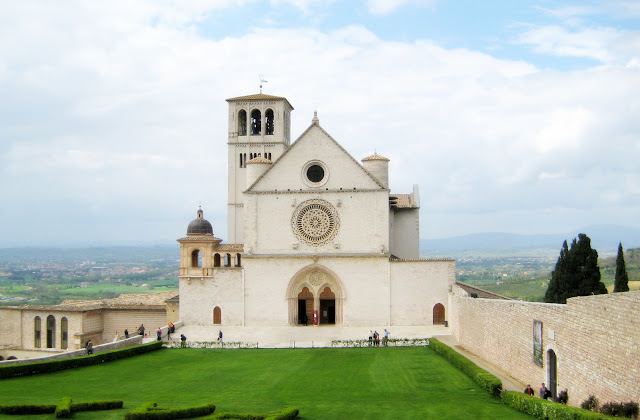Upper Church in the Basilica
Above the tomb of Saint Francis, a higher part of the Basilica stands tall. This magnificent white building is also full of interior light. In 1230, as the Romanesque construction of the lower Basilica was completed, the remains of St. Francis were placed under the main altar.
The upper Basilica, built in the Gothic style, was completed in 1236. Three years later, the bell tower with a cusp was completed (and then the cusp would be removed in 1518). The consecration of the altars of the two churches by Innocent IV dates back to the year 1253. Subsequently, modifications were introduced with the construction of the side chapels in the lower Basilica.
In 1445, a stone atrium was made to protect the portal of the lower church, and in 1604 the structures of the sacristies were modified. Another private sacristy was built at the base of the bell tower, to store the relics and the treasure. Fray Elias of Cortona, companion and vicar of Saint Francis, is generally considered the creator of the basilical complex.
In this structure, the predominantly French Gothic lines intermingle with the Romanesque lines, thus giving shape to an architectural masterpiece, unique in its kind. The interior is decorated with the largest surface of frescoes that exists, offering the visitor a concert of colors of the greatest painters of the Florentine, Roman, Sienese and Umbrian school of the Italian thirteenth and fourteenth centuries, not to be find elsewhere: Cimabue, Giotto, Lorenzetti, and Simone Martini.




Comments
Post a Comment